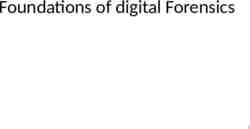Workplace Hostility and Nurses’ Perceptions of the Value of
24 Slides864.58 KB
Workplace Hostility and Nurses’ Perceptions of the Value of Interventions and Supportive Structures Ryan Hosken, ND, BSψ, BSN, RN A Capstone Presented to the Nursing Faculty of Western Governors University in Partial Fulfillment of the Requirements for the Degree Master of Science in Nursing, Management and Leadership Capstone Facilitator/Evaluator: Dr. Mary Van Noord, PhD, MSN, RN Western Governors University October, 2013
The general purpose of this study was to explore a knowledge deficit within the literature on nurse hostility. Cost, causes, and consequences flooded the literature on nurseto-nurse as well as workplace hostility. Lacking almost completely were specific recommendations for interventions and structures designed to mediate or prevent hostilities and support staff and management through the process of hostility resolution. Overview
Workplace and nurse-to-nurse hostility are now wellknown phenomena in healthcare organizations. While costs and consequences are well defined in the literature, nurses’ perceptions of interventions and supportive structures are lacking. Lack of supportive structures and ineffective interventions by managers have been cited by nurses as being primary concerns. This qualitative pilot study attempted to present a representative panel of active and passive supportive structures, as well as authoritative and collaborative interventions for nurses to evaluate as being valuable or controversial. This work was conducted to inform on reasonable next steps in policy development and staff support as the interventions and structures deemed most valuable by nurses are likely to be both well-received and effective. Abstract
The author believed the problem of nurse hostility may be exacerbated by a lack of managerial, administrative, or executive direction, use of nonstandardized responses, administrative uncertainty as to supportive structures and interventions, and zerotolerance policies that lack clear process and consequences. As an administrative nursing supervisor for a large healthcare system, and as a nurse, the author was obligated to participate in finding solutions for this epidemic. Additionally, the author’s bias in this research is as a nurse who has experienced the deleterious effects of horizontal hostility first hand and witnessed as well as intervened in numerous other occurrences. Choice of Topic
Qualitative survey pairing open and closed questions Numerical correlations of value for relative order Narrative analysis of explanations of perception Review of participant characteristics for trends Utilization of SurveyMonkey.com for national participation Research Methodology
Participant Representation
The causes and consequences of hostility were the mainstay of the literature on this topic. What appeared to be lacking almost completely were specific recommendations for interventions and structures designed to mediate or prevent hostilities and support staff and management through the process of hostility resolution. Equally lacking in the literature were nurses’ perceptions of supportive structures and opinions about interventions that could be useful in mediating hostilities. Existing Body of Knowledge
In previous studies conducted by Gerald A. Farrell, PhD, RN, nurse respondents’ main concerns regarding workplace hostility was their nurse managers’ failure to implement supportive structures when incidents of hostility were reported or to take appropriate actions to prevent the reoccurrence of hostilities (Farrell, 2001). Farrell, G. A. (2001). From tall poppies to squashed weeds: Why don’t nurses pull together more. Journal of Advanced Nursing, 35(1), 26-33. http://dx.doi.org/10.1046/j.1365-2648.2001.01802.x While vertical hostilities may be exchanged between superiors and subordinates, a large number of reported cases are horizontal, peer-to-peer, and nurse-to-nurse (Bartholomew, 2006). Bartholomew, K. (2006). Ending nurse-to-nurse hostility: Why nurses eat their young and each other. Danvers, MA: HCPro. No comprehensive summaries of interventions or supportive structures intended to mediate hostility were found in the literature, save one (McPhaul et al., 2013). McPhaul, K., London, M., & Lipscomb, J. (2013). A framework for translating workplace violence intervention research into evidence-based programs. Online Journal of Issues in Nursing, 18(1). 4. http://dx.doi.org/10.3912/OJIN.Vol18No01Man04 Pivotal Research
Primary Question Of the presented set, which interventions and supportive structures to hostilities do nurses perceive as being the most valuable and why? Secondary Question What trends in the data, if any, correlate participant characteristics with perceptions of value? Research Questions
Value was determined in two ways. The data were both collapsed and expanded. Collapsing the data involved adding the number of Agree and Strongly Agree responses together from each question and then dividing this sum by the total number of responses for that inquiry. This method produced a Consensus of Value. Expanding the data provided higher resolution and more detailed information allowing the interventions to be ranked by weighted responses. This method produced the Perceived Value Index. Value Analysis
Ordered from Highest to Lowest Perceived Value Index and secondarily by Consensus of Value Value Table
Perceived Value Index (most valued) & Consensus of Value Results
Most Valued Interventions
Please briefly explain why requiring manager/supervisor training in conflict resolution, mediation, and prevention may or may not be valuable. Key words in these responses included “mentor,” “front line,” “modeling,” “non-punitive,” and “confidence.” General consensus by narrative focused on the manager as being the “first responder,” “needing to lead by example,” and “requiring a skill set in conflict management.” This appears to be a critical characteristic by the perception of nursing staff when evaluating a manager or supervisor for adequacy in their leadership role. Commentary overall was very supportive and respectful of nurse managers. Narratives
Please briefly explain why a zero-tolerance policy to hostility with clear process, protocol, and consequences may or may not be valuable. Key words in these responses included “accountability,” “consequences,” and “standardized.” Narratives focused on defining behavior that was acceptable as well as what was not acceptable. Additional recurring commentary focused on decreasing gray areas and possibly reducing retaliation against reporting employees. Had this question not included “clear process, protocol, and consequences” it would likely have scored lower in the Value Index. This is important information to consider when developing a zero-tolerance policy. Narratives
Please briefly explain why having an integrity line or clear pathway for reporting hostilities may or may not be valuable. Key words in these responses included “confidential,” “anonymous,” “protection,” and “standardized.” Narratives continued to express value in reducing gray areas of policy and protocol as well as reducing the likelihood of retaliation when reporting hostilities. This question was deliberately not defined as being anonymous or confidential in order to solicit perceptions. It appears from the data that many nurses assume it is anonymous, while others perceive it as being confidential. While confidentiality is likely in a reporting system, anonymity would make it difficult to investigate concerns. Narratives
Please briefly explain why offering staff classes in conflict management skills may or may not be valuable. Key words in these responses included “education,” “empower,” “practice,” “safety,” “skill,” and “expensive.” A few participants commented that this could provide a venue to debrief as well as share experiences with others. Several nurses pondered the cost-to-benefit ratio. As this intervention was noted in the top four most valued by nurses, the cost-tobenefit ratio was likely worthwhile by nurses’ perceptions. Narratives
Some Authoritative Interventions (Crisis Management) were valued differently by male nurses as well as female nurses over the age of 60 then their counterparts female nurses less than 60 years of age (via Consensus of Value) Trends
Similar trending was noted for Actively Supportive Structures (Training/Skills) by Consensus of Value Trends
The author originally intended to utilize multiple organizations as points of distribution to nurses. Rather than pursuing multiple venues, a pilot study format was proposed for initial data collection and augmented reliability of future studies that may include quantitative or mixed methodologies and larger samples. Two healthcare organizations in particular were approached for possible inclusion in the study. Both organizations agreed to participate in data collection, but only one agreed to contribute to the initial pilot. Future research on hostilities is expected to continue the use of non-localized electronic survey media as an effective strategy to minimize any concerns by or negative impact to facilities. Organizational Permission
Strengths included broad geographic representation of nurses practicing in 24 states, both male and female nurse participants, and a representative cross-section of experience. Furthermore, the narrative data allowed for greater insight into why nurses valued particular structures. Weaknesses included a small sample size (N 90), a possible acquiescence bias, the need to balance statements such as “requiring” and “offering” interventions, and the need to utilize an untested researcher-developed survey tool. Strengths and Weakness
Statement themes such as “offer” (Collaborative Interventions) and “require” (Actively Supportive Structures) could have been explored more symmetrically by presenting the same interventions and structures with their alternate imperatives. Similarly, themes such as “anonymous” and “confidential” with respect to reporting and a zero tolerance policies with and without clear process, protocol, and consequences may have been worth evaluating for comparative perceptions of value. A potential acquiescence bias may have been nullified by changing the format of statements from ending in “would be valuable” to a more neutral presentation and by changing the response options from agree/disagree to a direct scale of value such as one through four, one being the least valuable and four being the most. This would also have created a direct Value Index without needing to weight responses. Additional quantitative data related to value is advisable. Future Research
The most highly valued interventions by way of this pilot may be summarized as (1) providing training in conflict resolution for staff and managers alike, (2) instituting and enforcing a zero tolerance policy with clear expectations and consequences, and (3) utilizing an integrity line or other clear reporting pathway to minimize both ambiguity and fear of retaliation. Additional research might involve teasing out whether structures such as training in conflict management should be optional or required, as well as whether reporting venues should be anonymous or simply confidential. Conclusion
A. B. Present an overview of your capstone project. Explain the process you went through to develop your project. C. 2. Explain how your project fits in to the existing body of knowledge for your field. Discuss the methods and outcomes of your project by doing the following: D. 1. Discuss why you chose your project. 1. Outline any special strategies or methodologies you used. 2. Summarize your results and conclusions. Discuss the challenges you faced in completing this project. 1. Outline any issues or obstacles you encountered. 2. Explain the strategies you used to address these challenges. E. b. Predict how you could apply these strategies to other projects you develop. Discuss the weaknesses of your project. F. a. Evaluate the effectiveness of these strategies in allowing you to complete your project. 1. Explain how you identified these weaknesses. 2. Explain what revisions you could make to the project to address these weaknesses. Discuss the strengths of your project. 1. Explain how you identified these strengths. 2. Predict how you could apply these strengths to other projects you develop. G. Provide recommendations for future study in your field. H. Discuss how you can apply what you learned. I. Complete the capstone release form. Disclosure





























